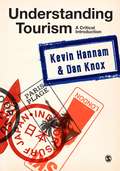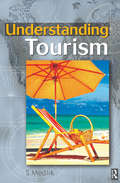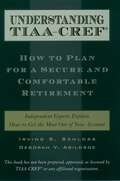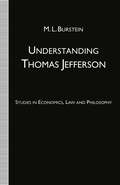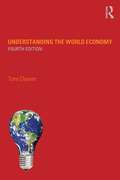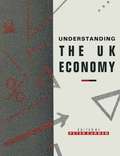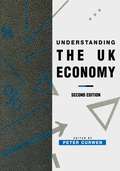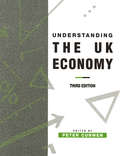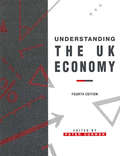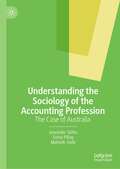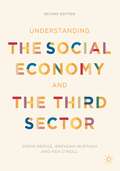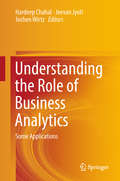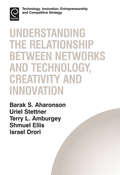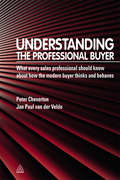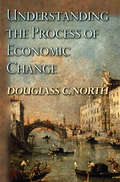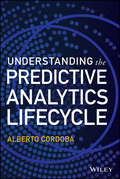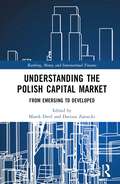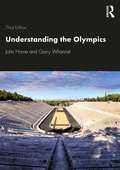- Table View
- List View
Understanding Tourism: A Critical Introduction (PDF)
by Dr Dan Knox Dr Kevin HannamThis text introduces tourism students to concepts drawn from critical theory, cultural studies and the social sciences. It does so with a light and readable touch, highlighting the ideas that underlie contemporary critical tourism studies in a practical and engaging way. Specifically, the authors examine how post-structuralist thought has led to a re-imagining of power relationships and the ways in which they are central to the production and consumption of tourism experiences. Eleven clear, relevant chapters provide an accessible introduction to tourism defining, explaining and developing the key issues and methods in this exciting field. These topics include: * Regulating Tourism * Commodifying Tourism * Embodying Tourism * Performing Tourism * Tourism and the Everyday * Tourism and the Other * Tourism and the Environment * Tourism and the Past * Tourism Mobilities * Researching Tourism A strong teaching text, this will be well received by lecturers seeking an authoritative, multi-disciplinary book on contemporary tourism and by students who want a practical, grounded introduction which understands their learning and research needs.
Understanding Tourism: A Critical Introduction
by Dr Dan Knox Dr Kevin HannamThis text introduces tourism students to concepts drawn from critical theory, cultural studies and the social sciences. It does so with a light and readable touch, highlighting the ideas that underlie contemporary critical tourism studies in a practical and engaging way. Specifically, the authors examine how post-structuralist thought has led to a re-imagining of power relationships and the ways in which they are central to the production and consumption of tourism experiences. Eleven clear, relevant chapters provide an accessible introduction to tourism defining, explaining and developing the key issues and methods in this exciting field. These topics include: • Regulating Tourism • Commodifying Tourism • Embodying Tourism • Performing Tourism • Tourism and the Everyday • Tourism and the Other • Tourism and the Environment • Tourism and the Past • Tourism Mobilities • Researching Tourism A strong teaching text, this will be well received by lecturers seeking an authoritative, multi-disciplinary book on contemporary tourism and by students who want a practical, grounded introduction which understands their learning and research needs.
Understanding Tourism
by S. MedlikUnderstanding Tourism examines tourism in 1000 questions and answers. It is intended for students and teachers of tourism worldwide, those who earn their living through tourism or who simply like being tourists, expecially if they enjoy quizzes. Students need to know what progress they are making, to test and consolidate their knowledge. Teachers need to know their students' progress, any learning problems, what parts of the syllabus are going down well or proving difficult. Both need feedback.Arranged in ten parts, which broadly correspond to most syllabus elements studied in schools, colleges and universities, the wide-ranging repertoire also includes such topics as who was who in tourism in the UK and worldwide; what Prime Ministers thought about tourism; who are UK and world leaders in tourism; UK, US, Australian and Caribbean tourism in figures; US versus UK language; the language of North of the (English) border; creative marketing campaigns and messages.Professor Medlik is an author, consultant and educator with more than 30 years of involvement in tourism. He held several senior academic appointments in Britain and other countries, advised a number of companies, as well as tourism, educational and other organizations, and was the first chairman of the Tourism Society. His published work includes 20 books and other publications and more than 100 contributions to the professional and technical press.
Understanding Tourism
by S. MedlikUnderstanding Tourism examines tourism in 1000 questions and answers. It is intended for students and teachers of tourism worldwide, those who earn their living through tourism or who simply like being tourists, expecially if they enjoy quizzes. Students need to know what progress they are making, to test and consolidate their knowledge. Teachers need to know their students' progress, any learning problems, what parts of the syllabus are going down well or proving difficult. Both need feedback.Arranged in ten parts, which broadly correspond to most syllabus elements studied in schools, colleges and universities, the wide-ranging repertoire also includes such topics as who was who in tourism in the UK and worldwide; what Prime Ministers thought about tourism; who are UK and world leaders in tourism; UK, US, Australian and Caribbean tourism in figures; US versus UK language; the language of North of the (English) border; creative marketing campaigns and messages.Professor Medlik is an author, consultant and educator with more than 30 years of involvement in tourism. He held several senior academic appointments in Britain and other countries, advised a number of companies, as well as tourism, educational and other organizations, and was the first chairman of the Tourism Society. His published work includes 20 books and other publications and more than 100 contributions to the professional and technical press.
Understanding TIAA-CREF: How to Plan for a Secure and Comfortable Retirement
by Irving S. Schloss Deborah V. AbildsoeTIAA-CREF is the largest private pension plan in the world, with more than $260 billion under management, including an estimated 1% of all shares traded on the New York Stock Exchange. And yet, while there is a wealth of information on IRAs, 401(k)s and other investment vehicles, until now there has been little guidance for the millions of TIAA-CREF plan participants and their advisors. The TIAA-CREF Book offers the definitive guide to TIAA-CREF for participants, estate planners, and financial advisors. Simply and clearly--and with a droll sense of humor--the authors explain the often complex legal and financial aspects of how the TIAA-CREF plan works, how the investment choices new participants make can affect the funds available at retirement, what the distribution options are for withdrawing money either before or after retirement, and how to leave the fund as an inheritance. For participants in the accumulation stage of their careers, the authors explain the important differences between fixed income securities (TIAA) and equity securities (CREF), and examine the investment choices for both. They address such important issues as how to allocate contributions, how portable an account really is, and how plans differ from employer to employer. In addition to the valuable primer on estate planning--from how to quantify assets, needs, and income to how the Federal Estate Tax affects TIAA-CREF accounts--the authors explore in detail the distribution options available and help weigh the pros and cons of each choice. Drawing on their extensive work in the field of estate planning, the authors cover the gamut of what it takes to make the most out of a TIAA-CREF plan. TIAA-CREF is a registered trademark of the Teachers Insurance and Annunity Association/College Retirement Equities Fund Corporation.
Understanding Thomas Jefferson: Studies in Economics, Law and Philosophy
by M.L. BursteinSupplies extensive material making it possible for the reader to understand how Thomas Jefferson's mind spanned the vast distance separating antiquity from writers like William James and Sigmund Freud, analyzing his studies in economics, moral philosophy, history and law.
Understanding the World Economy
by Tony CleaverThis fourth edition of Understanding the World Economy will continue to provide the reader with the clearest guide available to the global economic scene. Since the last edition was published in 2006, enormous changes have taken place. The world economy has been in upheaval with the biggest financial crash and ensuing recession since the 1930s; with a global re-ordering of economic power relations; with widespread demonstrations by those left behind; with divergent views about where Europe is heading; with a growing scarcity of essential resources; with increasing international terrorism and with increasing concerns of environmental degradation and climate change. To embrace such urgent issues, this text is an almost entirely rewritten version of earlier editions. Tony Cleaver takes a long look at the evolution of market systems and how they have liberated peoples on one side of the globe and yet driven others into debt, depression and despair. He analyses causes and consequences, and discusses (and sometimes dismisses) economic theories. Topics covered include: Why crashes occur What causes some countries to grow and others to stagnate Whether the Euro can survive The economic underpinnings of terrorism The dangers of climate change This book takes the student through the major characteristics of the global economy in jargon-free non-technical language. Chapter summary diagrams and a wealth of boxes and tables make this an essential introduction for undergraduates and A-level students, as well as the casual reader.
Understanding the World Economy
by Tony CleaverThis fourth edition of Understanding the World Economy will continue to provide the reader with the clearest guide available to the global economic scene. Since the last edition was published in 2006, enormous changes have taken place. The world economy has been in upheaval with the biggest financial crash and ensuing recession since the 1930s; with a global re-ordering of economic power relations; with widespread demonstrations by those left behind; with divergent views about where Europe is heading; with a growing scarcity of essential resources; with increasing international terrorism and with increasing concerns of environmental degradation and climate change. To embrace such urgent issues, this text is an almost entirely rewritten version of earlier editions. Tony Cleaver takes a long look at the evolution of market systems and how they have liberated peoples on one side of the globe and yet driven others into debt, depression and despair. He analyses causes and consequences, and discusses (and sometimes dismisses) economic theories. Topics covered include: Why crashes occur What causes some countries to grow and others to stagnate Whether the Euro can survive The economic underpinnings of terrorism The dangers of climate change This book takes the student through the major characteristics of the global economy in jargon-free non-technical language. Chapter summary diagrams and a wealth of boxes and tables make this an essential introduction for undergraduates and A-level students, as well as the casual reader.
Understanding the UK Economy
by Peter J. CurwenAn examination of the main historical trends of the UK economy and the changes of the 1980s and a look at how the economy will develop into the 1990s. The book is aimed at economics and business students.
Understanding the UK Economy (Palgrave Texts in Econometrics)
by Peter J. CurwenExplains the UK economy as a macroeconomy and as a financial system, as well as examining spending, taxing and borrowing and external transactions within the economy and the labour market, and welfare and industrial policy within the UK economy.
Understanding the UK Economy (Palgrave Texts in Econometrics)
This third edition has been completely revised and updated to take account of recent developments. The contributors apply economic analysis to the UK economy using an extensive database, producing a guide to the UK economy for economics and business students.
Understanding the UK Economy (Texts in Economics)
Fully revised, updated and with a new user-friendly format, the fourth edition of this popular book continues to provide an excellent introduction to the UK economy. Once again, Peter Curwen and his team of experts apply economic analysis to the UK economy using their extensive database and the result is a clear and incisive guide for economics and business students.
Understanding the Sociology of the Accounting Profession: The Case of Australia
by Jasvinder Sidhu Soma Pillay Mahesh JoshiThis book presents the first non-European and non-North American comprehensive study explaining failures of key merger attempts by Australia’s two leading accounting bodies.It employs two complementary theoretical constructs namely, boundary work and exclusiveness versus market control, to explain the maintenance of professional boundaries in the Australian accounting profession.In doing so, it illustrates key historical developments in Australia’s society, economy and business world towards shaping the present structure and operations of the accounting profession, and the remaining professional bodies at the national level.
Understanding the Social Economy and the Third Sector
by Simon Bridge Ken O'Neill Brendan MurtaghUnderstanding the Social Economy and the Third Sector fills a significant gap by bringing together a comprehensive range of topics in one resource. Students will gain a working knowledge of the social economy and social capital, illustrated by comparison with the private and public sectors and real-world examples.
Understanding the Role of Business Analytics: Some Applications
by Jochen Wirtz Jeevan Jyoti Hardeep ChahalThis book encompasses empirical evidences to understand the application of data analytical techniques in emerging contexts. Varied studies relating to manufacturing and services sectors including healthcare, banking, information technology, power, education sector etc. stresses upon the systematic approach followed in applying the data analytical techniques; and also analyses how these techniques are effective in decision-making in different contexts. Especially, the application of regression modeling, financial modelling, multi-group modeling, cluster analysis, and sentiment analysis will help the readers in understanding critical business scenarios in the best possible way, and which later can help them in arriving at best solution for the business related problems. The individual chapters will help the readers in understanding the role of specific data analytic tools and techniques in resolving business operational issues experienced in manufacturing and service organisations in India and in developing countries. The book offers a relevant resource that will help readers in the application and interpretation of data analytical statistical practices relating to emerging issues like customer experience, marketing capability, quality of manufactured products, strategic orientation, high-performance human resource policy, employee resilience, financial resources, etc. This book will be of interest to a professional audience that include practitioners, policy makers, NGOs, managers and employees as well as academicians, researchers and students.
Understanding the Relationship Between Networks and Technology, Creativity and Innovation (Technology, Innovation, Entrepreneurship and Competitive Strategy #13)
by Barak S. Aharonson Shmuel Ellis Terry L. Amburgey Israel Drori Uriel StettnerAn exciting new volume in the Technology, Innovation, Entrepreneurship and Competitive Strategy series from Emerald's popular Strategy collection. This volume features excellent new research devoted to advancing our understanding of how networks foster creativity, innovation and the development of cutting-edge technologies. Contributions offer unique perspectives on the significance of networks to the financial success of businesses, in addition to giving examples of how these can be crucial in bringing about creativity and innovation. It deals with the evolution of networks through geographic and industry boundaries. This is crucial reading for any researchers exploring strategic management tools and techniques, and specifically the intricacies of "network theory" within businesses.
Understanding the Professional Buyer: What Every Sales Professional Should Know About How the Modern Buyer Thinks and Behaves
by Peter Cheverton Jan Paul Van Der VeldeUnderstanding the Professional Buyer is a practical guide for sales people, giving them insight into the behaviour and strategies of buyers, so that they are able to deal with them more successfully and regain power in the buyer-seller relationship.In recent years the balance of power between buyer and seller has swung dramatically in favour of the buyer. Sellers are now faced with more professional, more knowledgeable and more powerful buyers - and the sales techniques used in previous years are no longer working. This book shows how to understand this new breed of buyer, in order to interact with them on a more level playing field. Contents include developments in the industry; purchasing organizations; types of buyers; purchasing analysis; and crucially, buyer-seller relations.
Understanding the Professional Buyer: What Every Sales Professional Should Know About How the Modern Buyer Thinks and Behaves
by Peter Cheverton Jan Paul Van Der VeldeUnderstanding the Professional Buyer is a practical guide for sales people, giving them insight into the behaviour and strategies of buyers, so that they are able to deal with them more successfully and regain power in the buyer-seller relationship.In recent years the balance of power between buyer and seller has swung dramatically in favour of the buyer. Sellers are now faced with more professional, more knowledgeable and more powerful buyers - and the sales techniques used in previous years are no longer working. This book shows how to understand this new breed of buyer, in order to interact with them on a more level playing field. Contents include developments in the industry; purchasing organizations; types of buyers; purchasing analysis; and crucially, buyer-seller relations.
Understanding the Process of Economic Change
by Douglass C. NorthIn this landmark work, a Nobel Prize-winning economist develops a new way of understanding the process by which economies change. Douglass North inspired a revolution in economic history a generation ago by demonstrating that economic performance is determined largely by the kind and quality of institutions that support markets. As he showed in two now classic books that inspired the New Institutional Economics (today a subfield of economics), property rights and transaction costs are fundamental determinants. Here, North explains how different societies arrive at the institutional infrastructure that greatly determines their economic trajectories. North argues that economic change depends largely on "adaptive efficiency," a society's effectiveness in creating institutions that are productive, stable, fair, and broadly accepted--and, importantly, flexible enough to be changed or replaced in response to political and economic feedback. While adhering to his earlier definition of institutions as the formal and informal rules that constrain human economic behavior, he extends his analysis to explore the deeper determinants of how these rules evolve and how economies change. Drawing on recent work by psychologists, he identifies intentionality as the crucial variable and proceeds to demonstrate how intentionality emerges as the product of social learning and how it then shapes the economy's institutional foundations and thus its capacity to adapt to changing circumstances. Understanding the Process of Economic Change accounts not only for past institutional change but also for the diverse performance of present-day economies. This major work is therefore also an essential guide to improving the performance of developing countries.
Understanding the Predictive Analytics Lifecycle (Wiley and SAS Business Series)
by Alberto CordobaA high-level, informal look at the different stages of the predictive analytics cycle Understanding the Predictive Analytics Lifecycle covers each phase of the development of a predictive analytics initiative. Through the use of illuminating case studies across a range of industries that include banking, megaresorts, mobile operators, healthcare, manufacturing, and retail, the book successfully illustrates each phase of the predictive analytics cycle to create a playbook for future projects. Predictive business analytics involves a wide variety of inputs that include individuals' skills, technologies, tools, and processes. To create a successful analytics program or project to gain forward-looking insight into making business decisions and actions, all of these factors must properly align. The book focuses on developing new insights and understanding business performance based on extensive use of data, statistical and quantitative analysis, explanatory and predictive modeling, and fact-based management as input for human decisions. The book includes: An overview of all relevant phases: design, prepare, explore, model, communicate, and measure Coverage of the stages of the predictive analytics cycle across different industries and countries A chapter dedicated to each of the phases of the development of a predictive initiative A comprehensive overview of the entire analytic process lifecycle If you're an executive looking to understand the predictive analytics lifecycle, this is a must-read resource and reference guide.
Understanding the Predictive Analytics Lifecycle (Wiley and SAS Business Series)
by Alberto CordobaA high-level, informal look at the different stages of the predictive analytics cycle Understanding the Predictive Analytics Lifecycle covers each phase of the development of a predictive analytics initiative. Through the use of illuminating case studies across a range of industries that include banking, megaresorts, mobile operators, healthcare, manufacturing, and retail, the book successfully illustrates each phase of the predictive analytics cycle to create a playbook for future projects. Predictive business analytics involves a wide variety of inputs that include individuals' skills, technologies, tools, and processes. To create a successful analytics program or project to gain forward-looking insight into making business decisions and actions, all of these factors must properly align. The book focuses on developing new insights and understanding business performance based on extensive use of data, statistical and quantitative analysis, explanatory and predictive modeling, and fact-based management as input for human decisions. The book includes: An overview of all relevant phases: design, prepare, explore, model, communicate, and measure Coverage of the stages of the predictive analytics cycle across different industries and countries A chapter dedicated to each of the phases of the development of a predictive initiative A comprehensive overview of the entire analytic process lifecycle If you're an executive looking to understand the predictive analytics lifecycle, this is a must-read resource and reference guide.
Understanding the Polish Capital Market: From Emerging to Developed (Banking, Money and International Finance)
by Marek DietlThe first stock exchange in Warsaw – capital city of the Kingdom of Poland– was established in 1817. Over the past 205 years, the fortunes of the capital market have been closely linked to the "bumpy road" of Polish history. The establishment of the GPW Warsaw Stock Exchange in 1991 was a landmark for transformation from a centrally planned communist economy to a market-driven capitalist one. Since the doors of the exchange reopened, Polish GDP per capita (current USD) increased eight times, translating into an average yearly growth rate of over 7%. The capital market has played a pivotal role in the economic success of Poland over the last three decades. It is not easy to precisely quantify the impact, as it was rather a spill-over effect. Economic growth has fostered the development of a capital market, and more efficient conversion of savings to investments via the capital market. The excellence of capital market institutions can be gauged with reference to various parameters. A synthetic measure is so-called market status. According to FTSE Russell (global index provider), Polish capital attained developed market status in 2018, being the first and only post-communist state to do so. It is fair to say that transformation has been completed and developed market status indicates clearly that the institutions and regulations are world class. The current challenge is competing with other developed markets for the best issuers and offering the most demanding investors an excellent trading experience. This book offers scientific insight into the Polish capital market story. Authored by a group of renowned scholars, with contributions aspiring to the highest academic standards for theoretical considerations and empirical research. The book covers various topics, including links between monetary policy and capital markets, micro and macro market structures, and investors and issuers' behaviour and strategies. All chapters are rooted in contemporary finance theory, supported by various econometric models based on the most recently available data. The book aims to provide academics and practitioners insight into the Polish capital market, appealing especially to those interested in gaining a deeper understanding of emerging markets' successful transformation into developed ones. It can also be used as supplementary reading for doctoral and master’s students in finance, particularly relating to capital markets and economics – predominantly development economics and economic policy.
Understanding the Polish Capital Market: From Emerging to Developed (Banking, Money and International Finance)
by Marek Dietl Dariusz ZarzeckiThe first stock exchange in Warsaw – capital city of the Kingdom of Poland– was established in 1817. Over the past 205 years, the fortunes of the capital market have been closely linked to the "bumpy road" of Polish history. The establishment of the GPW Warsaw Stock Exchange in 1991 was a landmark for transformation from a centrally planned communist economy to a market-driven capitalist one. Since the doors of the exchange reopened, Polish GDP per capita (current USD) increased eight times, translating into an average yearly growth rate of over 7%. The capital market has played a pivotal role in the economic success of Poland over the last three decades. It is not easy to precisely quantify the impact, as it was rather a spill-over effect. Economic growth has fostered the development of a capital market, and more efficient conversion of savings to investments via the capital market. The excellence of capital market institutions can be gauged with reference to various parameters. A synthetic measure is so-called market status. According to FTSE Russell (global index provider), Polish capital attained developed market status in 2018, being the first and only post-communist state to do so. It is fair to say that transformation has been completed and developed market status indicates clearly that the institutions and regulations are world class. The current challenge is competing with other developed markets for the best issuers and offering the most demanding investors an excellent trading experience. This book offers scientific insight into the Polish capital market story. Authored by a group of renowned scholars, with contributions aspiring to the highest academic standards for theoretical considerations and empirical research. The book covers various topics, including links between monetary policy and capital markets, micro and macro market structures, and investors and issuers' behaviour and strategies. All chapters are rooted in contemporary finance theory, supported by various econometric models based on the most recently available data. The book aims to provide academics and practitioners insight into the Polish capital market, appealing especially to those interested in gaining a deeper understanding of emerging markets' successful transformation into developed ones. It can also be used as supplementary reading for doctoral and master’s students in finance, particularly relating to capital markets and economics – predominantly development economics and economic policy.
Understanding the Olympics
by John Horne Garry WhannelHow did the Olympics evolve into a multi-national phenomenon? How can the Olympics help us to understand the relationship between sport and society? What will be the impact and legacy of the Olympics after Tokyo in 2020? Understanding the Olympics answers all these questions by exploring the social, cultural, political, historical, and economic context of the Games. This thoroughly revised and updated edition discusses recent attempts at future proofing by the International Olympic Committee (IOC) in the face of growing global anti-Olympic activism, the changing geo-political context within which the Olympics take place, and the Olympic histories of the next three cities to host the Games – Tokyo (2020), Paris (2024), and Los Angeles (2028) – as well as the legacy of the London (2012) Olympics. For the first time, this new edition introduces the reader to the emergence of ‘other Games’ associated with the IOC – the Winter Olympics, the Paralympics, and the Youth Olympics. It also features a full Olympic history timeline, many new photographs, refreshed suggestions for further reading, and revised illustrations. The most up-to-date and authoritative textbook available on the Olympic Games, Understanding the Olympics is essential reading for anybody with an interest in the Olympics or the wider relationship between sport and society.
Understanding the Olympics
by John Horne Garry WhannelHow did the Olympics evolve into a multi-national phenomenon? How can the Olympics help us to understand the relationship between sport and society? What will be the impact and legacy of the Olympics after Tokyo in 2020? Understanding the Olympics answers all these questions by exploring the social, cultural, political, historical, and economic context of the Games. This thoroughly revised and updated edition discusses recent attempts at future proofing by the International Olympic Committee (IOC) in the face of growing global anti-Olympic activism, the changing geo-political context within which the Olympics take place, and the Olympic histories of the next three cities to host the Games – Tokyo (2020), Paris (2024), and Los Angeles (2028) – as well as the legacy of the London (2012) Olympics. For the first time, this new edition introduces the reader to the emergence of ‘other Games’ associated with the IOC – the Winter Olympics, the Paralympics, and the Youth Olympics. It also features a full Olympic history timeline, many new photographs, refreshed suggestions for further reading, and revised illustrations. The most up-to-date and authoritative textbook available on the Olympic Games, Understanding the Olympics is essential reading for anybody with an interest in the Olympics or the wider relationship between sport and society.
